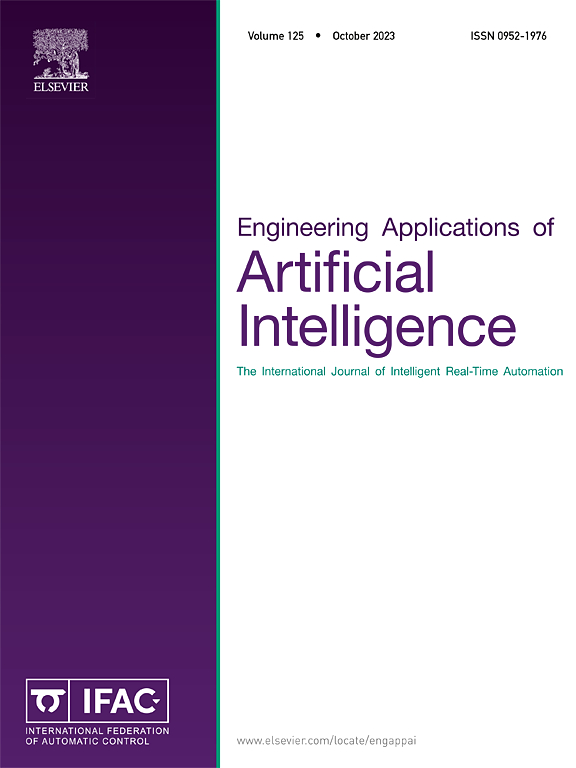The optimization-based fuzzy logic controllers for autonomous ground vehicle path tracking
IF 7.5
2区 计算机科学
Q1 AUTOMATION & CONTROL SYSTEMS
Engineering Applications of Artificial Intelligence
Pub Date : 2025-04-02
DOI:10.1016/j.engappai.2025.110642
引用次数: 0
Abstract
Nowadays, it is possible to see Autonomous Ground Vehicles (AGV) in traffic, factories and even restaurants. One of the key elements of these vehicles is the path tracking controller. Path tracking performance of the controller has a direct effect on the ride experience of the vehicle. This work proposes Fuzzy Logic Controllers (FLC) for steering of an autonomous vehicle. A fuzzy controller does not need for a certain model to steer the vehicle. However, the rules and membership functions should be determined with the aid of an expert. Here, with the purpose of getting one step close to the automatically tunable fuzzy control systems, the Artificial Bee Colony (ABC) algorithm is utilized on tuning the output membership functions of the FLC. Three different fuzzy controllers are developed for an autonomous vehicle. The first one is provided from the literature, two others are developed with the help of ABC algorithm. The base widths of the output membership functions of two other fuzzy controllers are determined by using cost functions of the Integral of Absolute Error (IAE) and the Integral of Time Absolute Error (ITAE). The performances of the developed controllers are evaluated through the results of various simulation studies, keeping in view performance indicators such as overshoot, settling time and Mean Squared Error (MSE). The results demonstrate superiority of the controllers proposed in this work to the reference one (the first fuzzy controller). Finally, this work reveals that the parameters of the fuzzy controller devised to steer an AGV can be tuned by using metaheuristic optimization algorithms.
求助全文
约1分钟内获得全文
求助全文
来源期刊

Engineering Applications of Artificial Intelligence
工程技术-工程:电子与电气
CiteScore
9.60
自引率
10.00%
发文量
505
审稿时长
68 days
期刊介绍:
Artificial Intelligence (AI) is pivotal in driving the fourth industrial revolution, witnessing remarkable advancements across various machine learning methodologies. AI techniques have become indispensable tools for practicing engineers, enabling them to tackle previously insurmountable challenges. Engineering Applications of Artificial Intelligence serves as a global platform for the swift dissemination of research elucidating the practical application of AI methods across all engineering disciplines. Submitted papers are expected to present novel aspects of AI utilized in real-world engineering applications, validated using publicly available datasets to ensure the replicability of research outcomes. Join us in exploring the transformative potential of AI in engineering.
 求助内容:
求助内容: 应助结果提醒方式:
应助结果提醒方式:


